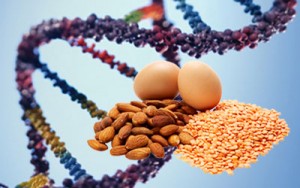Higher Protein Intake Important For Diabetes Health
 Protein is an important nutrient in any heart healthy, balanced meal plan. Not only does it help you maintain lean muscle mass and keep you full between meals, it also supports many other important processes in your body. People with diabetes know that they must keep track of how many carbohydrates they eat each day, but protein may become lost in the carb counting. A recent study published in the journal Clinical Nutrition has found that those with diabetes may not be getting enough protein each day.
Protein is an important nutrient in any heart healthy, balanced meal plan. Not only does it help you maintain lean muscle mass and keep you full between meals, it also supports many other important processes in your body. People with diabetes know that they must keep track of how many carbohydrates they eat each day, but protein may become lost in the carb counting. A recent study published in the journal Clinical Nutrition has found that those with diabetes may not be getting enough protein each day.
Ten Percent Protein Is Not Enough
A study by researchers at the McGill University Health Center-Royal Victoria Hospital in Montreal looked at those with diabetes on:
- eating plans with 10 percent of calories from protein
- eating plans with 17 percent of calories from protein
Those who took in one-tenth of their calories from protein were found to have enough protein in their body to avoid losing lean muscle mass. However, this amount was not enough to stimulate the growth of new protein in the body. Those who took in about 17 percent of calories from protein were found to have a higher net nitrogen balance than those who got 10 percent of their calories from protein. This higher net nitrogen balance shows that protein growth was occurring. The researchers suggest that people with diabetes should have closer to 17 percent of calories from protein to maintain or improve their health.
How Can I Fit More Protein Into My Meal Plan?
When you think of protein, chicken, beef, and pork may come to mind first. While meat is a great source of protein, there are many other ways to get more protein every day:
- At breakfast, have a glass of milk, a cup of yogurt, or an egg (or two) with an ounce of low-fat cheese.
- At lunch, add some grilled chicken, shrimp, or tuna to your salad greens. You can also add them to a whole-grain pita with veggies for a fiber-rich, protein-packed sandwich. If you want to go meatless, sprinkle some nuts, seeds, or low-fat cheese onto your salad and top with a yogurt-based dressing.
- At snack time, have a low-fat string cheese, two tablespoons of almonds, pistachios, or peanuts, or a cup of Greek yogurt for a punch of protein. For a filling evening snack, try a sliced apple or pear with a tablespoon of peanut, almond, or hazelnut butter.
- At dinner, you could have at least four to five ounces of chicken, lean beef or pork, fish, or other seafood along with your veggies. If you want to go meatless, try one-half cup beans over whole grain rice, four to five ounces of baked tofu, or some edamame (steamed soybeans) with your veggies for a protein-rich, heart healthy meal.

